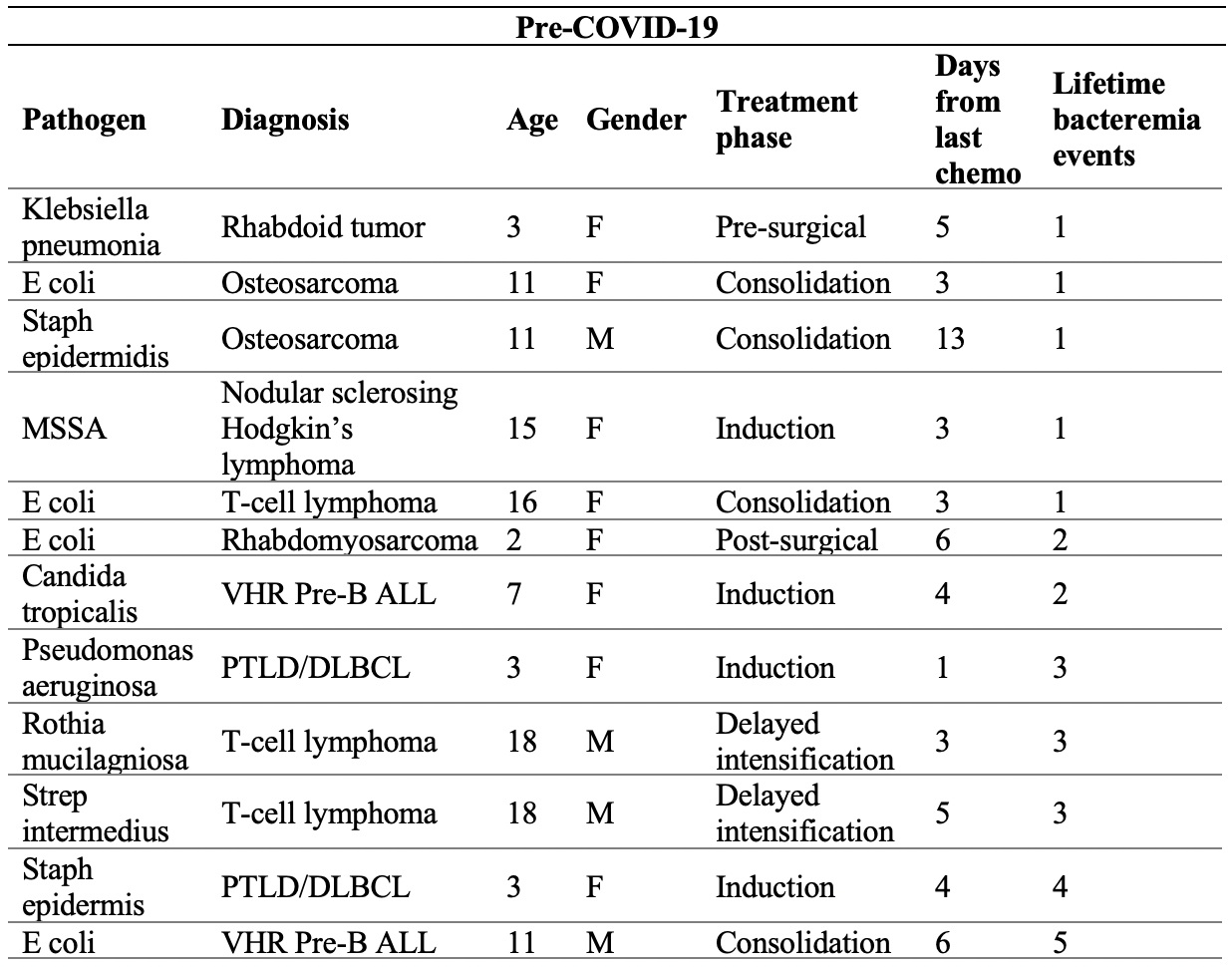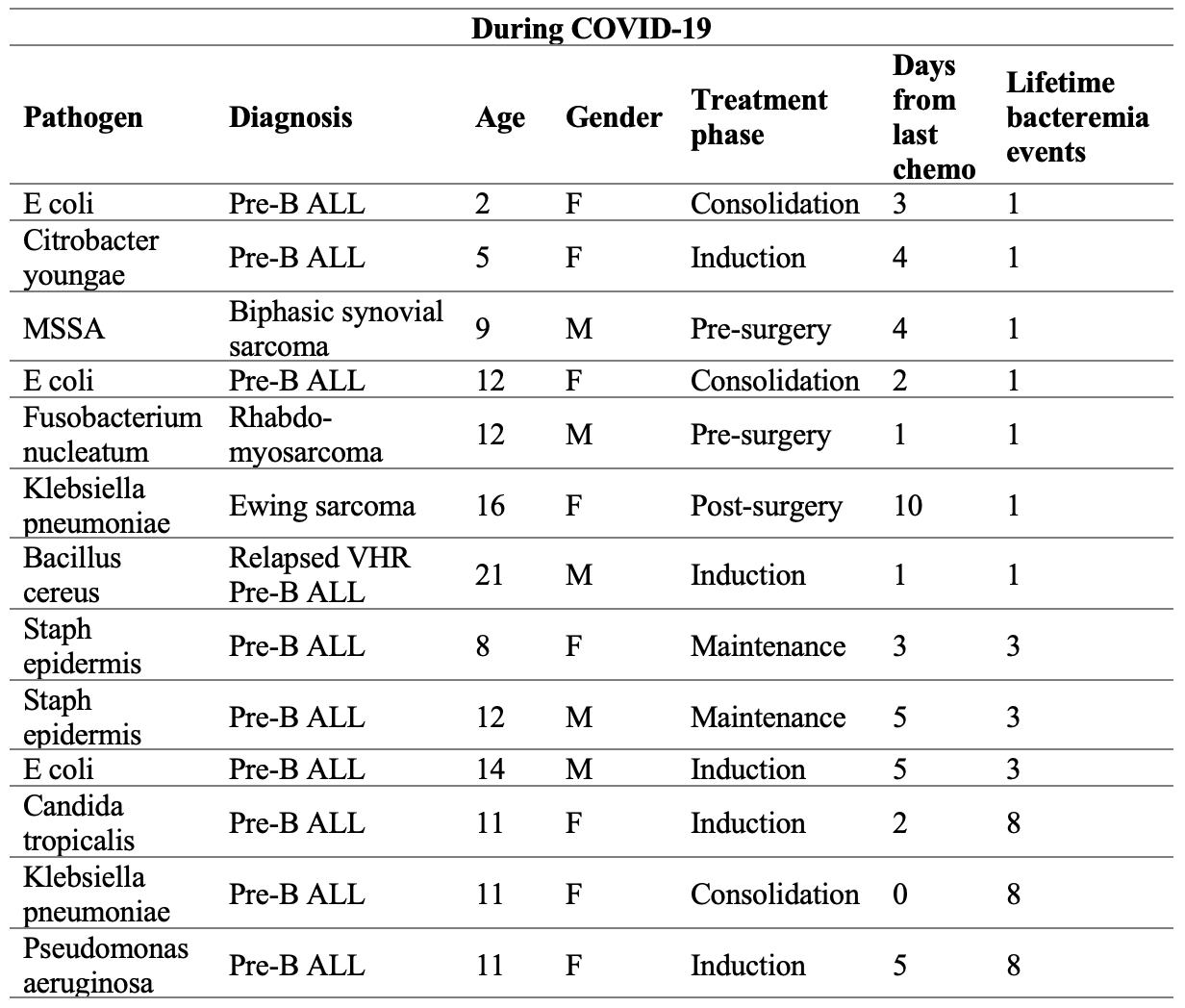Hematology/Oncology 1: Pediatric Oncology
Session: Hematology/Oncology 1: Pediatric Oncology
099 - Infectious Disease Risk Factors and Incidence of Bacteremia and Febrile Neutropenia During COVID-19
Saturday, April 26, 2025
2:30pm - 4:45pm HST
Publication Number: 99.5368
Sara E. Kaswan, Albert Einstein College of Medicine, Glastonbury, CT, United States; Helen Tian, University of California, San Francisco, School of Medicine, San Francisco, CA, United States; Rachel Offenbacher, Children's Hospital at Montefiore, Bronx, NY, United States; Daniel A.. Weiser, Albert Einstein College of Medicine, Bronx, NY, United States

Sara E. Kaswan, BS (she/her/hers)
Medical Student
Albert Einstein College of Medicine
Glastonbury, Connecticut, United States
Presenting Author(s)
Background: A leading cause of morbidity and mortality in children receiving cancer treatment is bacteremia and sepsis. Up to 25% of patients with fever and chemotherapy-induced neutropenia are found to have bacteremia. A child’s risk for developing bacteremia is influenced by the presence of an indwelling line, depth and duration of neutropenia, and mucosal integrity. Environmental infectious disease risk factors (IDRFs), such as proximity to sick contacts by visiting public places, may lead to febrile illnesses, though the relationship between environmental IDRFs and bacteremia has been difficult to study.
Objective: The COVID-19 pandemic created a period of reduced exposures to environmental IDRFs, such as decreased exposure to sick contacts, public transport, and schools. By studying the rates of febrile neutropenia with bacteremia among patients at the Children’s Hospital at Montefiore before and during COVID-19, we were able to evaluate if decreased environmental exposures changed the incidence of bacteremia in patients with febrile neutropenia. We hypothesized that environmental IDRFs do not alter the incidence of bacteremia in these patients.
Design/Methods: Using the new clinical data platform, ATLAS, developed at Montefiore Einstein, we performed retrospective chart review to compare the incidence of fever, neutropenia, and bacteremia during the pre-COVID-19 period (3/15/2019 – 3/14/2020) and during the COVID-19 isolation period (3/15/2020 – 3/14/2021). The cohort collected by ATLAS was manually chart reviewed as well.
Results: In the year before the onset of the pandemic, there were 79 events of febrile neutropenia in pediatric cancer patients undergoing treatment and of these, there were 12 cases of bacteremia. During the first year of the pandemic, there were 82 events of febrile neutropenia and of these, there were 13 cases of bacteremia. There was a similar distribution of cancer type among patients with febrile neutropenia and bacteremia pre- and during-COVID-19. Identified pathogens in patients with febrile neutropenia and bacteremia were similar prior to and during COVID-19.
Conclusion(s): The prevalence of both fever and neutropenia and fever and neutropenia with bacteremia did not decrease with lower exposure to environmental IDRFs, suggesting exposure to environmental IDRFs is unlikely to contribute to bacteremia in patients with chemotherapy-induced febrile neutropenia. Larger scale studies could provide rationale for consensus guidelines about social activities/restrictions for children undergoing cancer treatment.
Table 1
.png) Incidence of neutropenia, febrile neutropenia, and febrile neutropenia and bacteremia in patients with a cancer diagnosis during pre-COVID-19 and during COVID-19
Incidence of neutropenia, febrile neutropenia, and febrile neutropenia and bacteremia in patients with a cancer diagnosis during pre-COVID-19 and during COVID-19 Table 2
 Identified pathogens among patients with febrile neutropenia and bacteremia as well as diagnosis, age, gender, treatment phase, days from last chemotherapy, as well as lifetime bacteremia events among episodes seen pre-COVID-19
Identified pathogens among patients with febrile neutropenia and bacteremia as well as diagnosis, age, gender, treatment phase, days from last chemotherapy, as well as lifetime bacteremia events among episodes seen pre-COVID-19Table 3
 Identified pathogens among patients with febrile neutropenia and bacteremia as well as diagnosis, age, gender, treatment phase, days from last chemotherapy, as well as lifetime bacteremia events among episodes seen during COVID-19
Identified pathogens among patients with febrile neutropenia and bacteremia as well as diagnosis, age, gender, treatment phase, days from last chemotherapy, as well as lifetime bacteremia events among episodes seen during COVID-19
